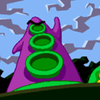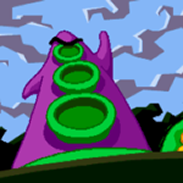
Featured Blog | This community-written post highlights the best of what the game industry has to offer. Read more like it on the Game Developer Blogs.
GDC is over, Now What?
GDC 2016 is over. Now what?
How do you make the most of it after it's over?
What happens to all those business cards you gathered?
Tip: You don't just shelf them.

GDC 2016 is over, and the back to reality shock should have already settled in. It was a really fun and exhausting week. We learned a lot, tried new technologies, and made new friends and connections. The by product of this is lots and lots of business cards.

Great. Now what? Unless you do something about these business cards, they will do very little than be a souvenir. And that’s not what this is all about. The best use for these cards is not to wait, but immediately start working on them after the conference is over. Everyone meets tens of new people during the conference, and it’s easy to get forgotten unless you reach back soon after.
The initial meeting is like making a change in memory, putting your face out there. Following back after the conference is the long term commit to the hard disk. So the person will remember you after the busy time is over, and hopefully add you to his contacts.
This is the process I follow, and while it takes some time, it sounds the most effective to me.
Write small notes on the business cards:
I read this somewhere and tried it for the first time during GDC. When you get a business card, have a pen ready and scribble quick notes on the back to remind you who this person is. It’s so useful when you get back to it later. Even something like “Met at After party” will help you a long way in remembering him. And in fact, some people intentionally provide space on their business card for you to write note.
Ofcourse this is too late now for GDC 2016, but it was worth a mention.
Build Spreadsheet of all the contacts:
Seriously. You’re not gonna go through all the business cards every time you want to contact someone. So make a spreadsheet, and put all the info you have there. My preference is Google Spreadsheet, as it will remain online accessible from anywhere. Write the person’s
Name
Role
Company name and url
Location
Where you first met: e.g. GDC 2016, or GDC 2016 after party
Date you first met: if that helps
Comments: e.g. Works as artist on new indie game, or anything that is important about him. Those notes on the back of the business cards should come in handy.
Email: duh!
Profile: LinkedIn, or personal site
Twitter account
I have provided a conference contacts sample template, so you can just grab it if it suits you. Feel free to change it to your liking. For example, you may decide to add a column “Invited to try our game”.
Follow and connect with him on social media:
This is a no brainer. First, follow him on Twitter. Even if his Twitter account is not on his business card, very often you can search his name and find him. I would not suggest trying to follow him if his account is private though, as that would seem a bit weird.
Then, look him up on LinkedIn. As this is the place to keep professional business contacts, and have much less clutter than Twitter. This can open so many doors in the future. When requesting to connect, make sure to add some useful comment, such as “We met at GDC and I would like to stay in touch”, or “We met at the after party, and discussed your new game.”. Remember when I told you to write notes on the back of the business card? This is another place where it gets handy.
Email followup:
Met someone you’d like to keep as a friend? Then send an email to stay in touch. had a business discussion? A followup email shows you’re serious and want to take things forward. Met someone interesting but didn’t have time to chat long enough with, then a followup email thanking him and expressing your interest will go along way.
Whatever the reason, if there is one, go ahead and send that followup email. Avoid general spam however, and try to talk to that specific person when writing the email.
Result?
For me personally, I've reconnected with so many people that I'm proud to call my friends. Expanded my network on LinkedIn, making me more visible, and also keeping me up with the new connection's updates, and some even joined as Skirmish users already.
BONUS
Will Helliwell suggested Evernote for scanning business cards, which seems like a much faster way to process them.

Pretty good huh? I still advise on adding notes and extra fields you may have as well though.
BONUS 2
Johan Toresson added couple of good ideas below in the comment section, one a bit daring. It's helpful to Google the person when you want to add him to your list. You can probably find his photo and know a bit more about him. I've learned quite a bit actually doing that.
Second is taking it a bit extra. Take a selfie with the person. I'm not sure how everyone responds to it. Some might mind? I had several selfies, only one person was a tad surprised.
Fun Trivia
It took me total of about 12 hours to go through all the cards, make the list, and get in touch with those I wanted to. How long did it take you?
Read more about:
Featured BlogsAbout the Author(s)
You May Also Like













